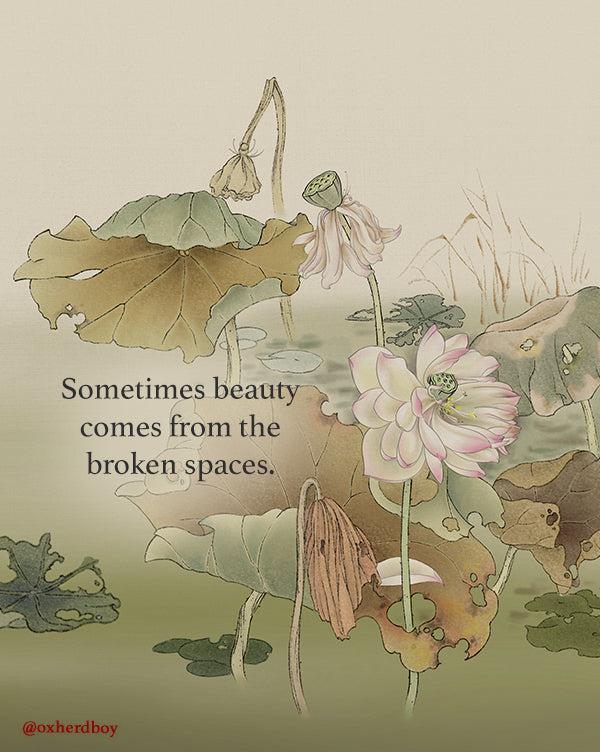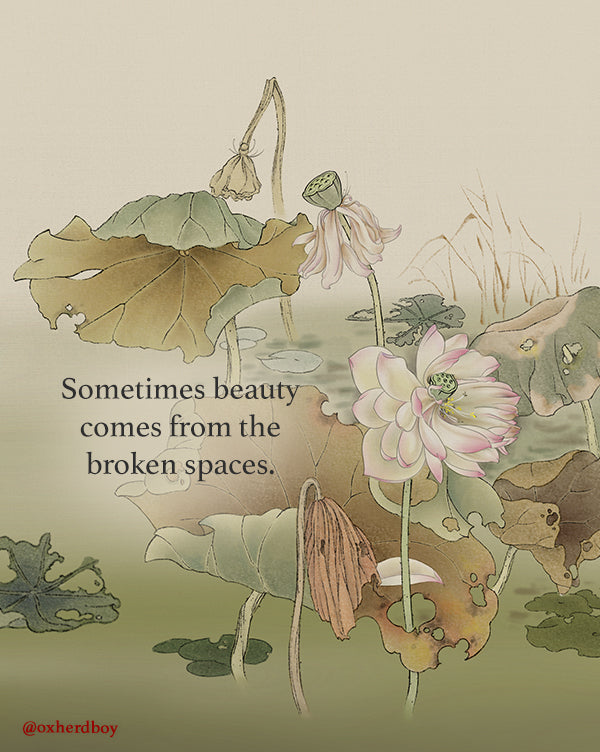Beauty and Brokenness
Beauty and Brokenness
I've been asked what is my favorite page from the book, and this is my favorite illustration -- or at least part of it. It's funny, because when I was taking painting lessons when living in Taipei, my teacher had painted a composition of wilted lotuses as a demonstration for a classmate who happened to be a Buddhist monk. The teacher gave a disclaimer saying normally we wouldn't choose such a subject to give another person, but as a practitioner of Buddhism who appreciates the concept of impermanence, death and rebirth, the student wouldn't mind.
The thing is that in Chinese culture, when giving works of art, one needs to be mindful of the meaning that could be conveyed by the subject. For example, if you give a recently married couple an painting of a pair of a mandarin ducks, which symbolize conjugal happiness, but the birds have clipped wings or are anatomically missing sections of feathers, it might be interpreted as hoping their marriage is short-lived.
Wilting flowers can mean a wish for someone's demise or predict a loss of good fortune, a waning of one's sun. But for me, it can also be beautiful. As Adrienne Maree Brown describes the role of mushrooms and decomposition, what is toxic, broken, decaying, and no longer serving life can still be used. It need not be wasted. It can be processed back into the wholeness of living. And I think of that when I look at this image. Brokenness only looks bad when I see it from a narrow point of view. When I expand my perspective to include the act of processing what's broken back into the whole, it looks beautiful.
Share

Come along with us.
Get a new comic (nearly) every week and a monthly newsletter sharing a look behind the scenes, news, giveaways, events, and more.
